Researchers looked at lensed galaxy systems, searched for nearby analogs to those distant systems, and found that in general, the systems showed signs of bingeing star formation and then quiet lulls. Plus, using tree rings to track Arctic ice changes, and this week’s What’s Up.
Podcast
Show Notes
Chicxulub crater hides ring structure
- Shining a Spotlight on the Chicxulub Impact Crater (Eos)
- “Mapping the Chicxulub Impact Stratigraphy and Peak Ring Using Drilling and Seismic Data,” G. L. Christeson, J. V. Morgan, S. P. S. Gulick, 2021 August 3, JGR Planets
Neon points to ongoing Martian volcanism
- Noble Gas Hints at Mars’s Rapid Formation (Eos)
- “Mars’ atmospheric neon suggests volatile-rich primitive mantle,” Hiroyuki Kurokawa et al., 2021 September 4, Icarus
Understanding the chemistry of space requires soot
- Kaust press release
- “Continuous Butadiyne Addition to Propargyl: A Radical-Efficient Pathway for Polycyclic Aromatic Hydrocarbons,” Hanfeng Jin et al., 2021 August 19, The Journal of Physical Chemistry Letters
- “First aromatic ring formation by the radical-chain reaction of vinylacetylene and propargyl,” Hanfeng Jin et al., 2020 December 1, Combustion and Flame
Women kept home by pandemic
- University of Geneva press release
- “Female authorship of covid-19 research in manuscripts submitted to 11 biomedical journals: cross sectional study,” Angèle Gayet-Ageron, Khaoula Ben Messaoud, Mark Richards, and Sara Schroter, 2021 October 6, BMJ
Early Universe star formation came in bursts
- University of Nottingham press release
- “Emission line galaxies in the SHARDS Frontier Fields – I. Candidate selection and the discovery of bursty Hα emitters,” Alex Griffiths et al., 2021 October 21, Monthly Notices of the Royal Astronomical Society
Tracing Arctic ice changes with driftwood
- AGU press release
- “A Driftwood-Based Record of Arctic Sea Ice During the Last 500 Years From Northern Svalbard Reveals Sea Ice Dynamics in the Arctic Ocean and Arctic Peripheral Seas,” Georgia M. Hole et al., 2021 September 15, JGR Oceans
Norse settlers arrived in Newfoundland in 1021 C.E.
- New Dating Method Shows Vikings Occupied Newfoundland in 1021 C.E. (Smithsonian Magazine)
- Solar storm confirms Vikings settled in North America exactly 1,000 years ago (The Guardian)
- “Evidence for European presence in the Americas in AD 1021,” Margot Kuitems et al., 2021 October 20, Nature
What’s Up: Full Moon on October 20 and the Double Cluster
- The Hunter’s Moon Is October’s Full Moon (timeanddate)
- Taking Pictures of the Moon (timeanddate)
- Double Cluster in Perseus on October evenings (EarthSky)
Transcript
Hello and welcome to the Daily Space. I am your host Dr. Pamela Gay, and I am here to put science in your brain.

Sixty-six million years ago, an asteroid ten kilometers across hit the Earth, melted 10,000 cubic kilometers of rock, sent a massive tsunami crashing through the oceans, a shockwave slamming across the lands, and a layer of iridium across the entire planet. This was a bad day for the planet and a really bad day for the life that lived on land. That day, was the day the dinosaurs by and large died, and the Chicxulub crater formed.
Unfortunately, as our world is mostly covered in water, the asteroid struck in water and formed a crater that is largely obscured by the Gulf of Mexico and visually only reveals itself through unusual structures arcing across the Yucatan Peninsula. With other forms of measurement, such as sonar from boats and seismic and gravitational data, it becomes possible to trace out not just the underwater crater but also hidden structures.
In a new paper published in the Journal of Geophysical Research, a team led by GL Christeson collected data from sensors with direct measurements using drilled-out samples. They were able to map in detail the crater’s central peak, the ring that formed around that center, and the inner rim of the structure. Of particular interest to researchers studying multiple planets was the discovery that while the ring around the crater’s central peak only has a few visible structures, the ring is a complete ring when the density of the crater floor is looked at. This implied that when we see incomplete rings on other worlds, they, like this crater, may simply be hiding their rings in the density profile of the ground.
We’ll be speaking with Dr. Christeson about this research on November 16, so please tune in then for more information.
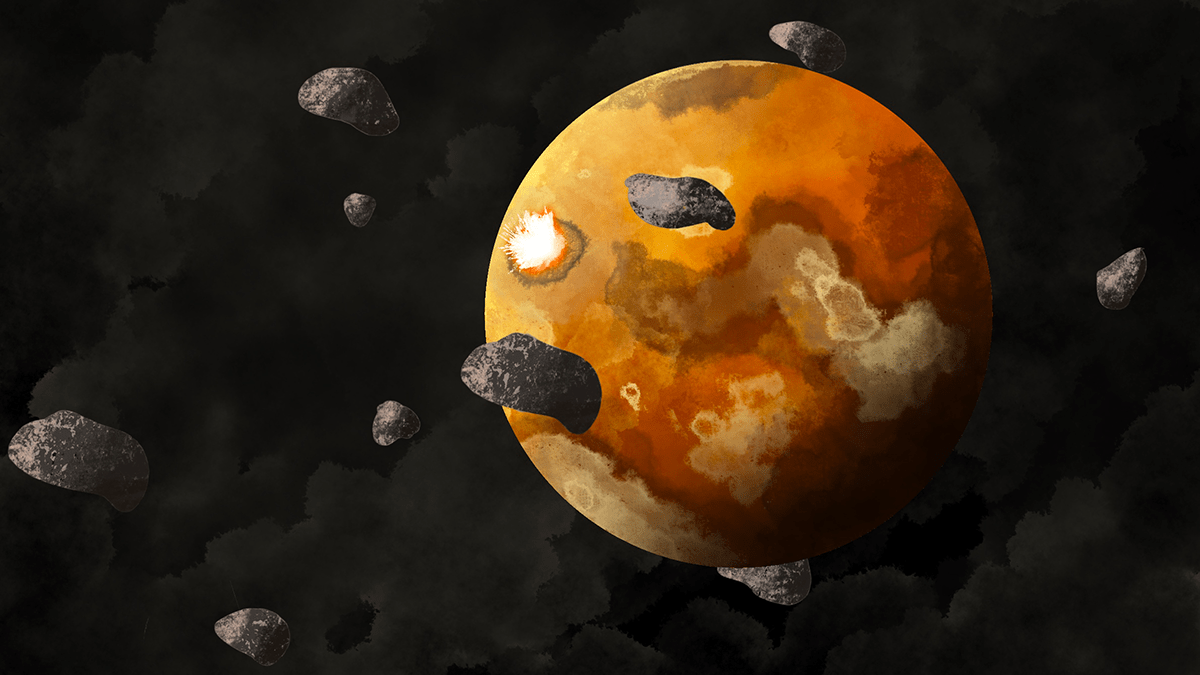
It is exceedingly frustrating that we can’t go drill into other worlds, and when we try to study other planets like Mars, we have to make do with whatever we can get. Today, that means looking at rocks from Mars that were launched our way during giant impacts and studying the measurements of modern-day missions on and orbiting the red planet.
Meteorites from Mars contain trapped pockets of gas from the past while missions reveal modern atmospheric ingredients. Remarkably, we find that neon, an easy-to-lose element, has been around on Mars for a long time. Since neon doesn’t stay around, its abiding presence indicates that while individual neon atoms may be escaping, the neon in Mars’s atmosphere is being constantly replenished from somewhere.
The most likely source is volcanic eruptions, and according to a new paper in Icarus that is led by Hiroyuki Kurokawa, this implies volcanic eruptions as recently as within the past 50,000 years! Further, since Mars still has neon to give off, it must have a lot of neon inside, and that means Mars formed fast and that neon was mixed into Mars’s internal structure before the Sun began to clear out the inner solar system with its winds.
Now, while this explanation is the most exciting and seems the most likely, it is also possible that dust, asteroids, and/or comets carried neon to Mars. To really understand what happened, we need a better understanding of the exact isotope of neon on Mars, and that means we need more rocks. Those being collected by the Mars Perseverance rover may already have the info we need locked away.
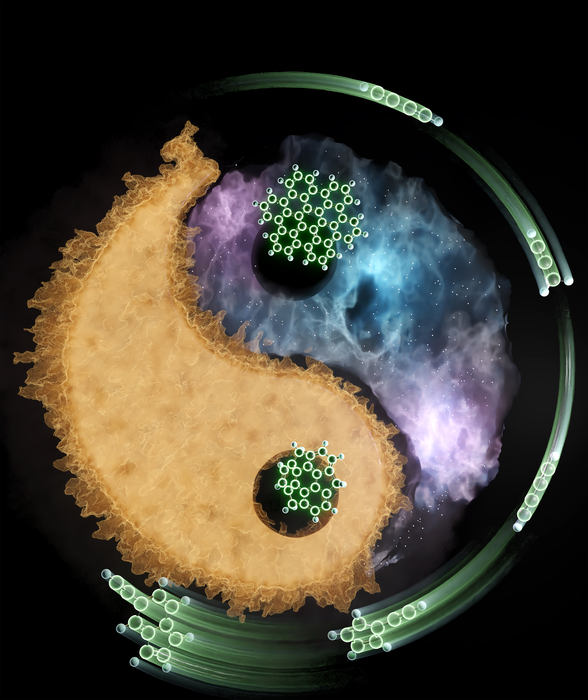
Carl Sagan famously said, “…to make an apple pie, you have to make a universe.” It turns out that sometimes, to understand the chemistry of the universe you have to understand the pollutants of the planet Earth.
Combustion processes generate complex molecules called polycyclic aromatic hydrocarbons (PAHs). These large collections of atoms are part of soot and not entirely healthy to breathe. They also form naturally in massive molecular clouds in some of the colder and denser parts of space. According to Hanfeng Jin: During combustion, soot formation can be significant in a reaction environment that is deficient in radicals. Likewise, the temperature in the interstellar medium is too low to maintain a sufficient radical pool, and radicals produced by high-energy photons in the galaxy are rare.
In a new paper in the Journal of Physical Chemistry Letters, Jin leads a team that numerically models how PAHs form and the role of a specific compound called butadiyne. They realized that this molecule, which forms in burning organics like oil, also forms in places like Saturn’s moon Titan. By understanding how the molecules form in such different environments, they are working toward changing what comes out of various industrial processes on Earth so that less harmful molecules result, and we can all breathe a little bit easier.
As a side note, we encountered a paper this morning documenting how the pandemic has disproportionately affected women in research. There is a now documented 20% drop in women appearing as first author or corresponding author on research papers.

While many men have seen this pandemic as an amazing time to get ahead with less travel and fewer face-to-face meetings to eat their time, women have been held back by the need to take care of the family as daycare for both children and elders has been shut down and as home schooling became the only schooling available. This disparity in expectations of men and women in the majority of households will have long ranging impacts on the imbalances between genders.
Agele Gaey-Ageron, study lead, points out: These authorship positions are used for decision-making, because they reflect the degree to which researchers contributed to the production of science. The attainment of these key positions, alongside with the total number of articles published, are essential for moving up the academic ladder.
Put another way, the unequal expectations placed on men and women in the home are going to lead to women having a harder time advancing their careers and fewer women reaching senior positions. When you hear people say “women don’t work hard enough to produce”, ask if they have the same opportunities to spend their evenings doing research for fun. If they don’t, maybe tell them how amazing they are for pulling off all the research they do get done at work, where they often face higher committee assignments, and at home where they often have more chores. The world does not have equal expectations, and now it is documented.
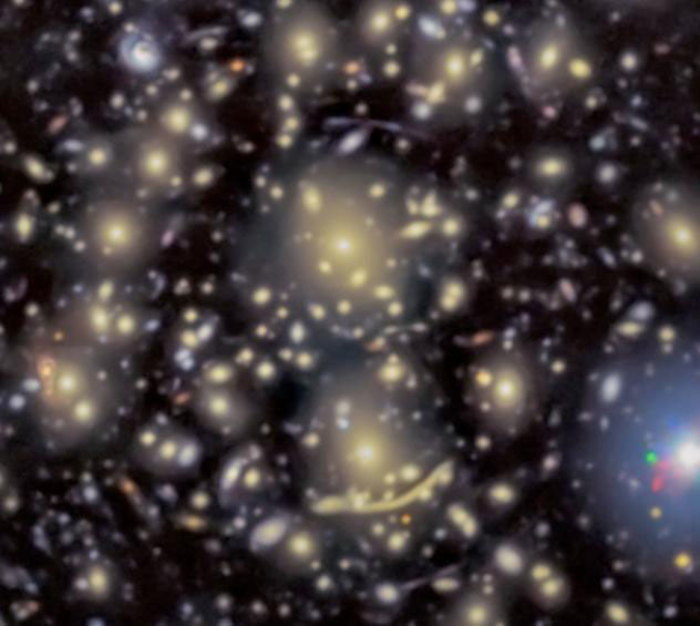
One of the emerging themes in cosmology is “finding ways to study things we really wanted to use JWST to study.” While the potentially next great orbiting observatory has finally made it to the region from which it will be launched, you can’t count your orbiting telescopes until they have achieved first light, and as someone who planned to use the Japanese ASTRO-E telescope for my dissertation, only to see it fail to reach its intended orbit, I have somewhat dedicated my career seriously to not counting telescopes before they launch and return healthy images.
Seriously, don’t do it. That path only leads to heartache.
And for the folks who have answered calls for observing proposals, sat on science committees, and otherwise tried to plan to use the JWST for the past decade, as it has over and over remained “a couple of years” or less from launch, finding alternative ways to do their science has become a necessity.
One of JWST’s science goals was to directly observe galaxies in the early universe and answer questions about how they formed and evolved in the first few billion years. These early galaxies are too faint for the largest Earth-based telescopes to observe, and Hubble, while awesome, is actually a smallish telescope.
Without the technology to directly observe these systems, we have to find JWST alternatives, and luckily, as we’ve discussed before, the universe provides. High-mass systems, like massive galaxy clusters, can use their mass to bend light in the same way a lens bends light, and when a bunch of light intended for other parts of the universe gets focused our way, the too faint to see can become bright enough to observe. In the past on this show, we’ve talked about a variety of individual systems used to study specific aspects of distant galaxies.
Now, a survey looks at many different gravitationally lensed galaxies to try and understand how galaxies evolved in the early universe by finding local copies. This was a two-step process. Researchers first looked at lensed systems to figure out their basic characteristics, and then they used data from the Survey for High-z Absorption Red and Dead Sources (SHARDS) to look for nearby analogs to those distant systems. According to Alex Griffiths, lead author of a new study in the Monthly Notices of the Royal Astronomical Society: Until we have the new James Webb Space telescope, we cannot observe the first galaxies ever formed, they are just too faint. So we looked for similar beasts in the nearby Universe and we dissected them with the most powerful telescopes we currently have.
In total, they identified 27 dwarf galaxies to study and found that the systems showed signs of bingeing star formation and then undergoing quiet lulls. Griffiths goes on to explain: …the start of galaxy formation is fitful, like a jerky car engine, with periods of enhanced star formation followed by sleepy intervals. It is unlikely that galaxy mergers have played a substantial role in the triggering of these bursts of star formation and it is more likely due to alternative causes that enhance gas accretion, we need to search for those alternatives.
There is still so much science we, as a research field, require a large infrared space telescope to accomplish. We hope to see JWST launch this winter and deploy successfully. Until then, we celebrate the scientists who have found alternatives to do the research they want.
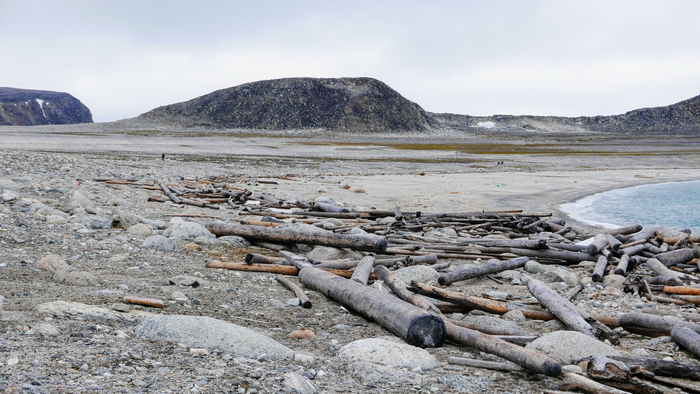
When it comes to climate change, researchers have used a wide range of methods to understand the history of our planet on a global scale. We’ve talked before about using the movement and diets of animals, the location of mangroves, and ice cores to track just how climate has changed over time periods and around various locations, and this next story uses another method – tracking driftwood in the Arctic.
A new study in the Journal of Geophysical Research: Oceans and led by Georgia Hole retraces the journey of driftwood that has washed up on the shores of Svalbard, a Norwegian archipelago in the Arctic Circle. This journey allowed the researchers to reconstruct the level of sea ice and changes in the currents. As Hole notes: This is the first time driftwood has been used to look at large-scale changes in Arctic sea ice dynamics and circulation patterns.
The press release goes on to explain: The Arctic Ocean collects trees that naturally fall into high-latitude rivers in North America and Eurasia. When it was cold enough, some of the trees were frozen into the sea ice. The ice then floated across the ocean, swept along by ocean currents and winds, until beaching on Svalbard’s shores. There they sat, some for hundreds of years, until researchers like Hole…came along.
The team collected driftwood and then analyzed the tree rings back in the lab. As we’ve mentioned before, there is a huge database of tree rings called the International Tree-Ring Data Bank, and the tree rings in the driftwood were compared to samples of Arctic forests already in that database. This allowed Hole to match trees to their originating countries and watersheds and see how the sources of the driftwood varied over time.
Combining that tree ring data with the earliest recorded sea ice observations from 1600 to 1850 and the more recent airplane and satellite imagery, and it was possible to analyze the driftwood patterns for changes in the sea ice. The data shows that the lowest-latitude sea ice, the ice in the warmest regions of the Arctic, moved steadily northward. This means the climate was warming and the ice was melting, which made it less likely for driftwood to be carried across the Arctic on the sea ice. As Hole explains: We also saw an increase in variability in the driftwood record from 1700 to 1850, which we interpret as increased variability in sea ice.
When it’s colder, there is more sea ice for the driftwood to travel upon, and the sources of the driftwood had greater variability than during times when the climate warmed and the ice melted.
This just goes to show that so many aspects of our planet are affected by climate change, and sea ice in particular seems to be very fragile.
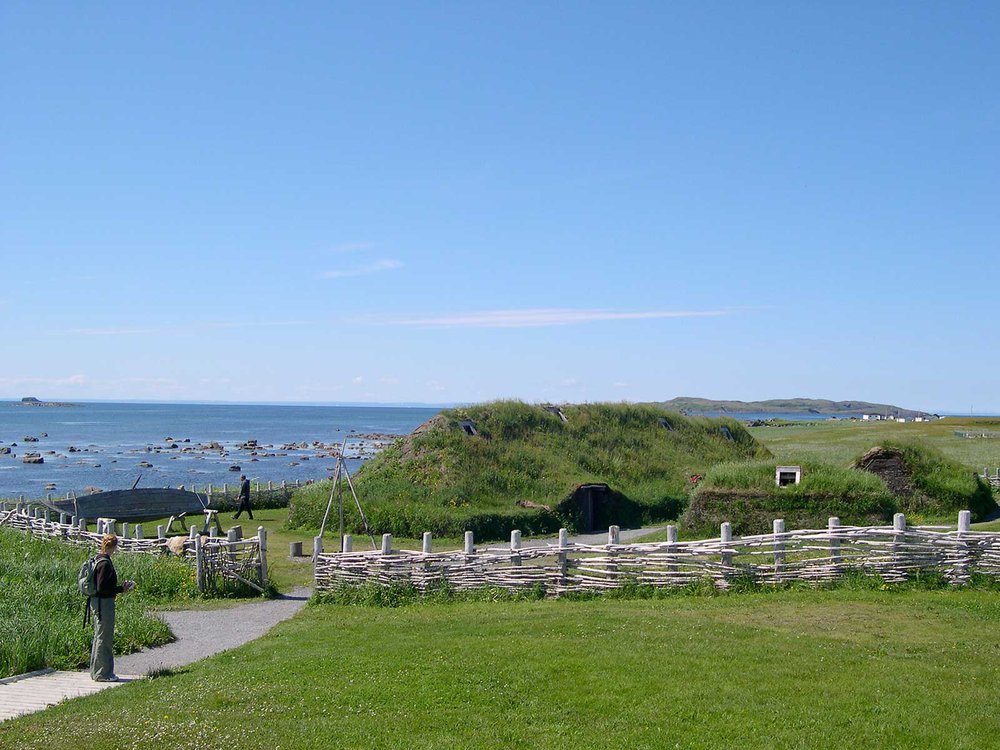
Speaking of tree rings, we got a little excited when we read that tree ring data was used to determine the exact YEAR that the Vikings settled in North America. Specifically, scientists studied wooden artifacts found at the L’Anse aux Meadows settlement site in Newfoundland, Canada. The results of the analysis were published in Nature and the answer to the question? The Norse settlers arrived in 1021 C.E.
Wait, why is this a planetary science story? Ah, that’s the REALLY interesting bit. Within the tree rings are evidence for an extremely rare, once-in-a-thousand-years cosmic-ray event. That event showered Earth in high-energy particles back in 993 C.E. and caused a visible spike in the tree rings around the world because of the sudden increase in atmospheric carbon levels. By counting out from that spike in the rings of fir and juniper trees cut down by the Vikings, the researchers were able to pinpoint that exact year.
Understanding the places and times of the Norse settlement is a lovely rabbit hole we could go down for days, and we’ll link to the Smithsonian article that caught our attention in our show notes at DailySpace.org so that you can all fall down that rabbit hole with us.
What’s Up
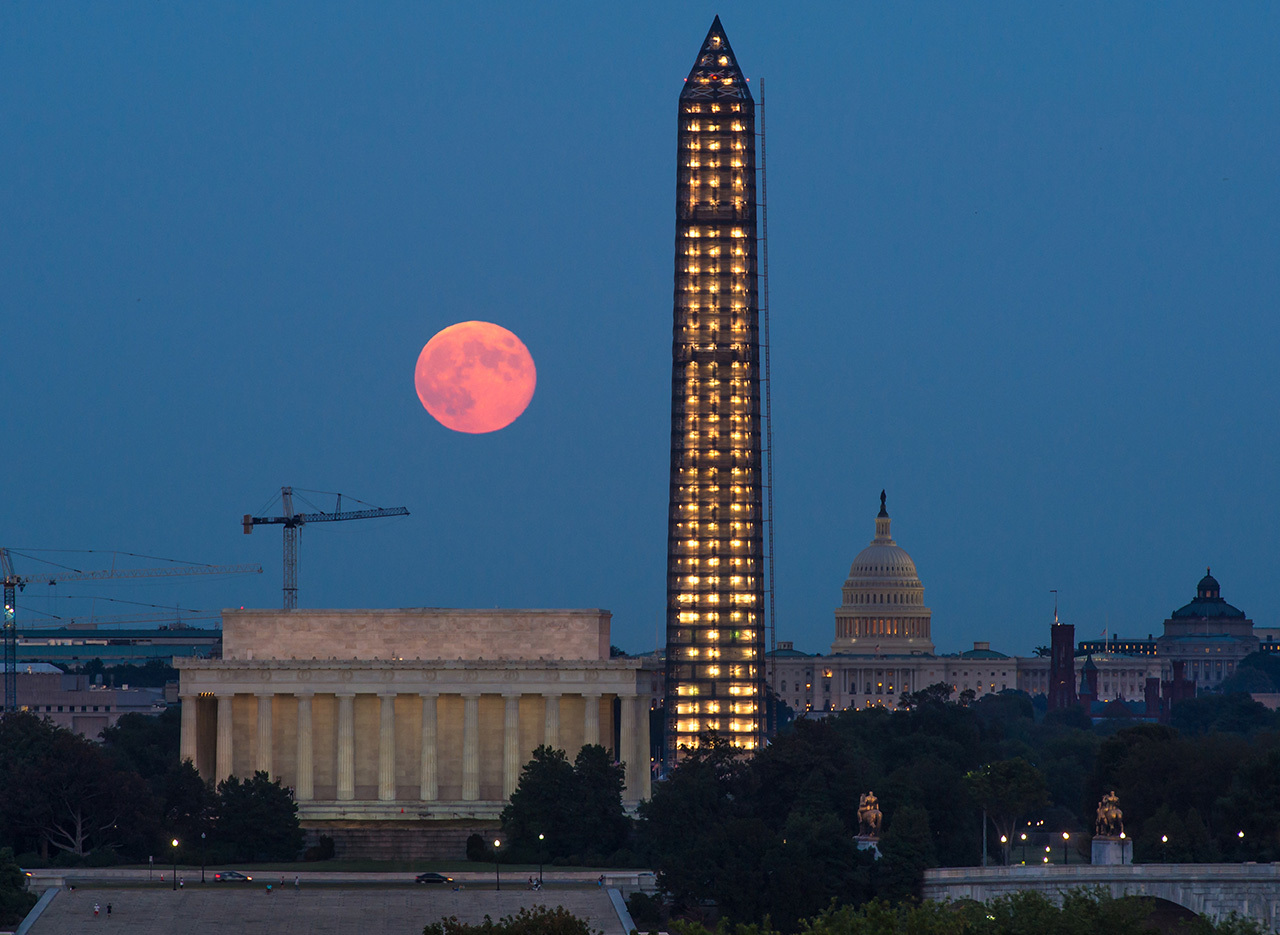
Wednesday, October 20, was the full moon, the third phase of the lunar cycle. Various full moons get fancy-sounding names like “pink moon” or “beaver moon”. These don’t necessarily have a scientific reason; however, the full moon did have practical usage in keeping track of the passage of time before the industrial era.
A full moon in October is called the Hunter’s or Harvest Moon and traditionally signaled the beginning of preparations for the long and cold winter in the northern hemisphere. This usually means collecting and preparing food that cannot be grown in winter for long-term storage.
Full moons aren’t the best times to observe with a telescope because the complete illumination washes out the fine details on the Moon and the faint deep sky objects close to the Moon. Objects opposite the Moon will be less affected by the Moon’s glare. A full moon is really the time to practice your landscape astrophotography, taking pictures of ground features that happen to have something in space in the background. The full moon provides a good subject for this genre of astrophotography because it’s big and bright. Also, you can make out lots of surface detail with a short focal length.
Landscape astrophotography is also a good way to get into the hobby as a whole. The equipment it requires is minimal, unlike the “massive telescope on a tracking mount with a special camera” of deep sky or planetary astrophotography. That equipment will run you thousands of dollars in the long run, so it’s always better to start off spending less money first to decide if you want to get further into the hobby.
In this case, all you need is a camera with a wide or normal focal length lens (25-50mm depending on your camera’s sensor size), a tripod, and a remote shutter release cable. As you may recall from the last What’s Up, this is similar equipment to what is used for taking pictures of meteor showers, but for landscapes, you want a little bit more focal length. This will give you more detail of the object in the sky but still allow you to have a terrestrial foreground.
Interesting photo compositions place the full moon on the intersection of two third lines. If you want to try something more advanced, try lining up the composition so the Moon is on one intersection and a terrestrial object is at the diagonally opposite intersection. This uses one of the basic rules of photography – the rule of thirds to make an interesting composition of Earth and space. You can estimate this or turn on a grid on your camera’s screen to help with framing. Consult your camera’s manual to see if it has this feature.
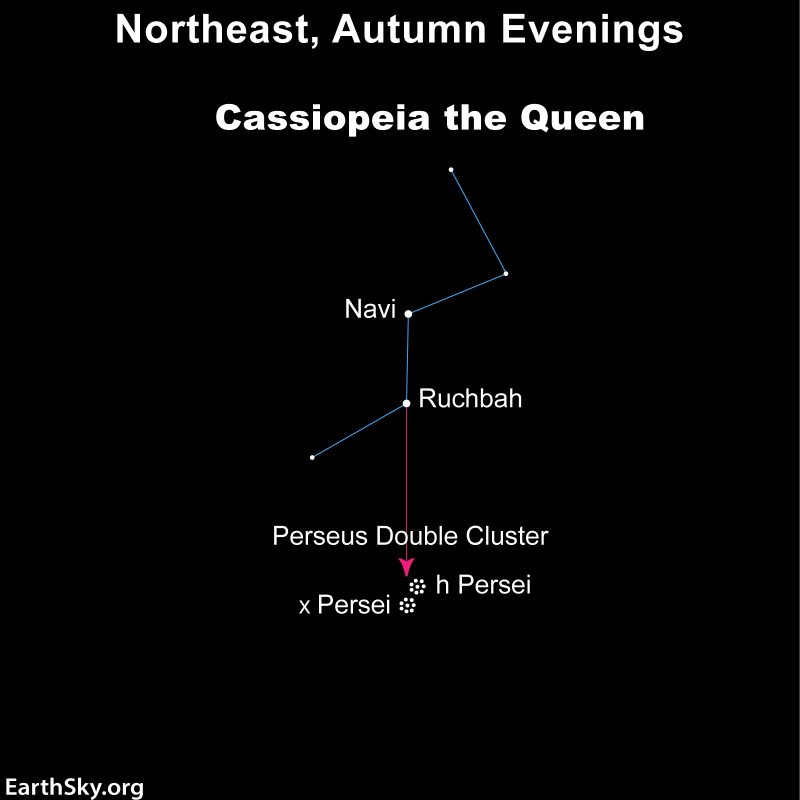
Besides the Moon, there are some deep-sky objects that also make for interesting landscape targets, including Messier 31 the Andromeda Galaxy, Messier 45 the Pleiades Star Cluster, and NGC 884 and 869, the Double Cluster. M31 and M45 are well known but you may not have heard of the Double Cluster.
The Double Cluster is a pair of large open clusters in between the constellations of Cassiopeia and Perseus. You’re missing out because it’s so easy to find and a rewarding object to observe. First, find the bright star Algol in the constellation Perseus. Go north until you see the “W” asterism that is Cassiopeia. Then, just south of the two middle stars in the W, is the Double Cluster. Once you find it, you can frame it with a foreground object such as a tree or building, remembering the rule of thirds.
Looking at the Double Cluster with a small telescope at low power, with a 25 to 30mm eyepiece, is also a rewarding experience, especially if you are a beginner. So go out and enjoy the wonder of the night sky, and if you do take any landscape photographs, please make sure you share them with us on social media or in our Discord.
This has been the Daily Space.
You can find more information on all our stories, including images, at DailySpace.org. As always, we’re here thanks to the donations of people like you. If you like our content, please consider joining our Patreon at Patreon.com/CosmoQuestX.
Credits
Written by Pamela Gay and Beth Johnson
Hosted by Pamela Gay
Audio and Video Editing by Ally Pelphrey
Content Editing by Beth Johnson
Intro and Outro music by Kevin MacLeod, https://incompetech.com/music/


 We record most shows live, on Twitch. Follow us today to get alerts when we go live.
We record most shows live, on Twitch. Follow us today to get alerts when we go live.